Disking soil is one of the main tools for caring for a piece of land. Like every stage of processing, disking requires certain conditions and means for a successful result.
Deciphering the concept
In itself, disking the soil is its less rough processing compared to plowing with the help of special equipment attached to a tractor or other appropriate means of transportation. This procedure is carried out mainly in the autumn, less often in the spring. Disking is called upon to make the soil loose, to crush large lumps of earth, as well as to cut and “grind” the weed or parts of agricultural plants remaining after harvesting.
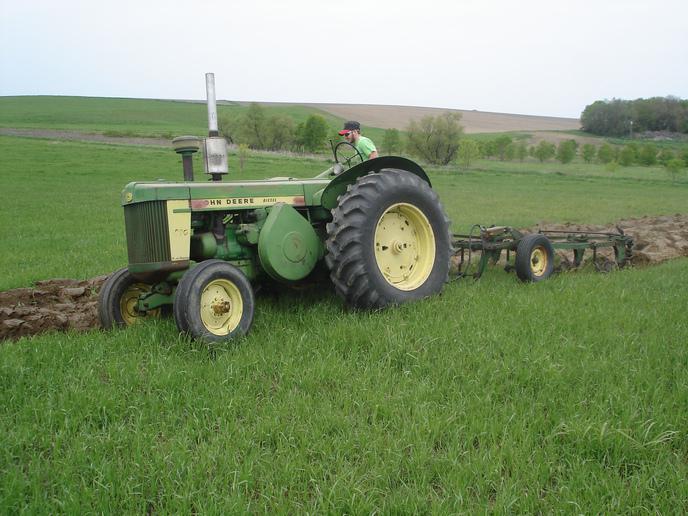
Disking Equipment
It is almost impossible for a person to independently carry out disking the soil using mechanical manual labor. The following elements are required for this laborious process:
- tractor;
- harrow;
- equipment for sharpening circular saws.
The working bodies in the harrow must be set at a certain angle: the larger the angle, the greater the depth of the disk. Instead of a tractor, you can use motoblocks, various types of plows or seeders, if the size of the harrow allows this, the best quality disking is done by the tractor, since the strength of this transport is fully comparable with the weight of the frame and disks on it, as well as the soil resistance during operation. Disks are sharpened mainly for cutting stubble and preparing virgin lands before plowing, since work is carried out with plant material that requires a sufficient level of cutting stems.
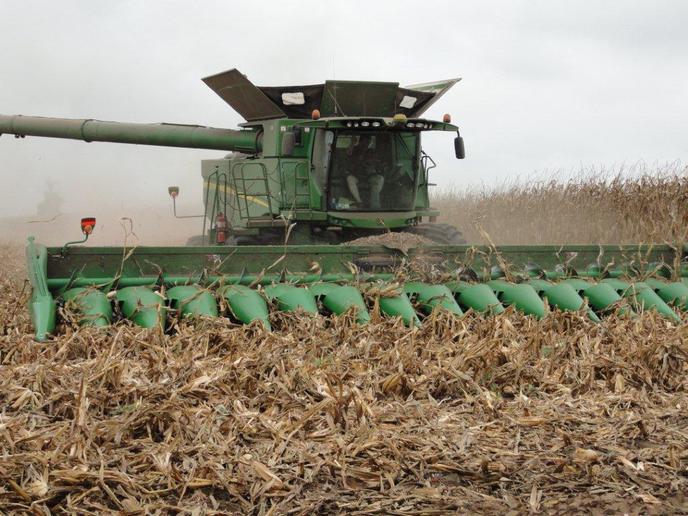
Harrow
These agricultural implements are of several types:
- mesh;
- needle;
- Dental
- disk.
A disc harrow is a frame with batteries of sharpened smooth disks, which is attached to a tractor, a plow, a seeder or other “pulling” tools for work. Harrow batteries are mounted on a frame in two rows of sections, which include 9-10 spherical disks. They can be serrated (notched), flat or convex, small 450 mm or large - more than 500 mm.
When it comes to stubbing, it is called peeling, and in this case the harrow is called the disk cultivator.
The difference between this tool is the concavity of the disks in the batteries, as well as the fact that each of them is on a separate bearing, while in the harrow the working bodies are put on one shaft.
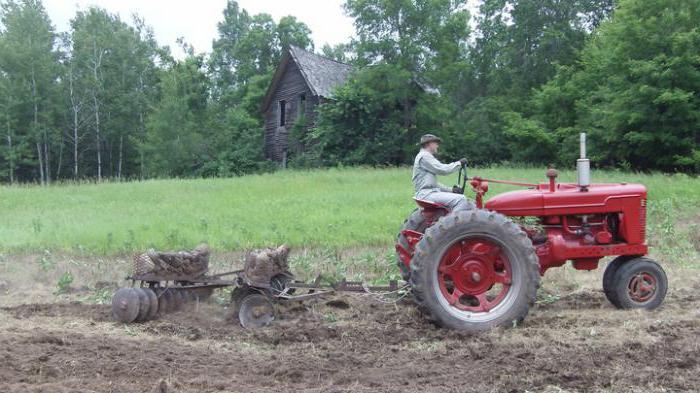
Thanks to the concave discs, the tiller is better at harrowing the crushing of soil and vegetation. However, it requires more fuel consumption and is prone to clogging, which leads to a rapid deterioration of the result during the work process.
Purpose of discing
Disc harrows are used directly for surface soil care. Processing is carried out before or after plowing the land, in the first case facilitating the work of the next loosening agricultural machinery, and in the second - preparing the soil for sowing procedures or facilitating the application of fertilizers.
What is soil disking for?
- loosening the soil to a depth of 10 to 20 cm;
- stubble peeling;
- crushing and mixing with the soil of plant residues, large lumps of earth;
- soil crust destruction.
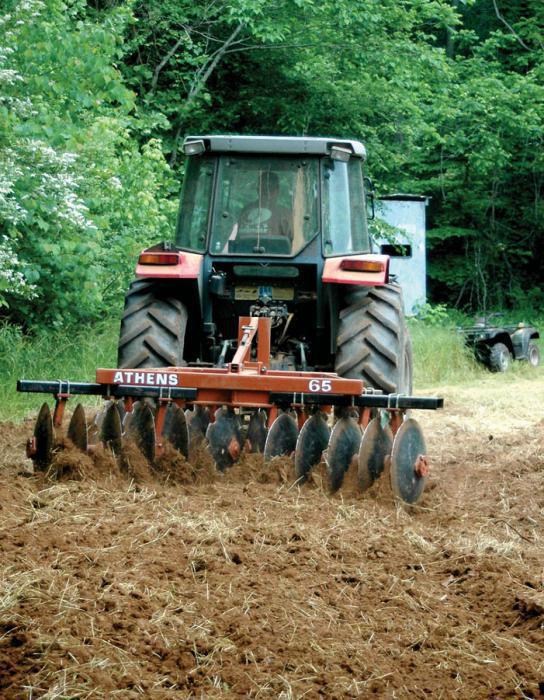
These characteristics of soil disking are necessary, first of all, for preparing the land for planting plants or wintering the soil bed, convenient work of other types of agricultural machinery on it, destruction of weed grass, pests that live in stubble and turf, oxygen saturation of the upper soil layer.
Requirements Before Disking
It’s not advisable to start disking the land just like that, because the canvas needs to be prepared in order to avoid damage to the harrow and its components or deterioration in the quality of the disking result. Proper soil disking consists in preparing the land for the operation of the equipment. The preparation includes the following actions and conditions:
- garbage collection from the site (scraps of a drop hose, film, garters, large stones, bricks, etc.);
- dry weather selection;
- sharpening discs;
- serviceability of equipment;
- the choice of the depth of disking depending on the intended crop for planting (for example, disking the land for planting garlic for the winter does not require a depth of more than 12 cm) and the corresponding harrow (10-12 cm, 16-20 cm, others are customizable).
If the disking is carried out by order of the contractor using his own technique, then non-compliance with the basic requirements of preparation for the procedure may lead to a justified refusal to work.
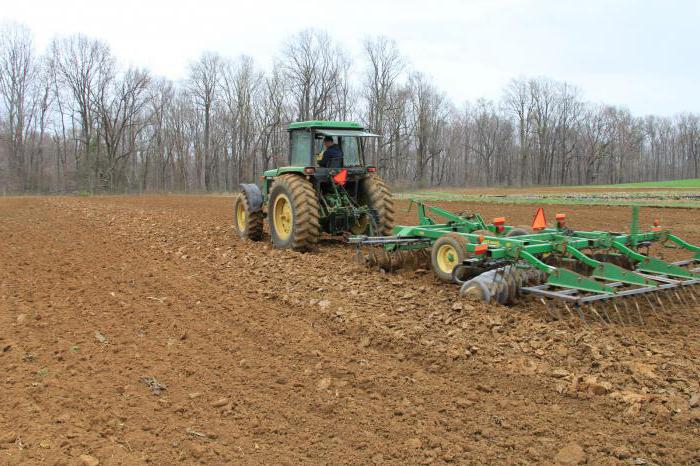
Event holding
When deciding to conduct disking on a site, the pricing policy of the persons who will provide this service should be taken into account. Most of all, the following factors are important in calculating the cost of disk work for a contractor:
- size of land for cultivation;
- land form for the convenience of work;
- selection of suitable equipment;
- purity, soil moisture level.
Agrotechnical requirements for soil disking | |
Uneven discs in depth | plus / minus 10 percent |
Furrow discrepancy | no more than 20 centimeters |
Soil crushing | quality not less than 80 percent |
The presence of passes, unfinished | not allowed |
Stubble conservation | not less than 80 percent |
Combs surface | not less than 8 cm |
The presence of erosion-hazardous particles for the soil layer from 0.5 to 3 cm | no more than 5 percent |
There is a possibility that the condition of the soil in relation to its contamination may lead to the need for re-cultivation.
Accepting work from the performer also requires knowledge of the required result of the disking.